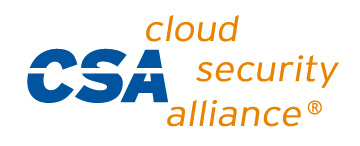
Listen and Learn: Data-Driven Approaches for Your Hybrid Work Model
For many organizations, hybrid work is here to stay — especially as employee experience becomes increasingly critical to attract and retain talent. As circumstances evolve, HR leaders are considering how this model can be a win-win for employees and the business. But how can they measure what’s working? And where does employee feedback factor into the process? Senior Engagement Strategist Jenna Filipkowski, PhD, shared practical tips and best practices for a data-driven hybrid work strategy. Read her insights below. “A lot of organizations now are talking about listening strategies,” she said, defining the term as “an organization’s approach for sensing and responding to their people’s feedback, opinions, and needs.” As workplaces continue transitioning to new ways of working, it’s especially critical to seek and act on employee feedback. Constant data collection can help you understand what’s happening and the employee sentiment around it. Related: A Customer Advisory Board Underscores the Power of Listening A defining factor of an effective listening strategy? “The connection of looking at workforce metrics or operational data alongside how your employees are feeling,” Filipkowski said. For example, you might capture data on activities like the number of meetings taking place and how often people work on weekends. Then, you could ask additional questions to uncover how those activities influence people’s feelings about their roles. “You’re able to paint a better picture of what’s happening in your workforce because you’re able to capture how people feel along with what they’re doing,” Philipkowski elaborated. Enter the employee survey. “Don’t just measure to measure,” she advised — typically, you’ll end up with data you don’t know how to act on. “And then you’ll wonder why people don’t want to take your surveys.” Filipkowski offered these tips for approaching employee surveys: 1. Make the survey a value-add The most important thing Filipkowski learned from years of designing and conducting employee surveys? Pay attention to the user experience, and always seek to provide value. “They want to be able to see that this is a platform where they can truly and honestly share how they’re feeling and what they’re experiencing with you, and that something is going to change because of it.” 2. Don’t substitute surveys for action All too often, organizations conduct surveys as a stalling tactic, or to create the illusion of action. Beware of surveys seeking validation for preconceived ideas rather than input to guide future decisions. A poorly designed survey can hurt rather than help, undermining future participation and eroding trust. “Push back on your business leaders and your senior leaders if they want to deploy a survey methodology but don’t have a good enough reason to do so,” Filipkowski said. In contrast, the most effective and well-received surveys are approached as a true research opportunity, where feedback and anecdotes shape decisions and policy. Related: Before You Send an Employee Survey, Consider This “Some organizations are in the opportune place to challenge the ways they’ve been working,” Filipkowski said. “This brings up a lot of questions around ‘Are we working in the best way?’ To answer that, you need data from your workforce, and you also need data on the preferences and the needs of your employees.” Here are some potential challenges related to hybrid work that make good research angles for an employee survey: “All HR functions should have something like this to be more intentional and less ad-hoc about your employee listening,” Filipkowski concluded. Employees are listening, after all. Build, implement, and refine the employee experience to prevent top talent from walking away.
What’s Your Organization’s Listening Strategy?
Filipkowski has worked as an I/O psychologist and people experience researcher, designing hundreds of surveys throughout her career. It’s safe to say she’s learned a thing or two about effective listening.
A range of activities — many of which you may already do — fall under the listening strategy umbrella:
Looking at the list above, it’s easy to pinpoint effective listening tactics. But, as Filipkowski pointed out, it isn’t always sustainable to rely on these time-intensive methods when you need to get feedback across the workforce.
The Right (and Wrong) Ways to Approach Employee Surveys
In essence, employee surveys are “listening at scale,” she noted, especially when conducted continuously (e.g., pulse surveys). But for optimal participation and results, HR departments need to execute surveys in a very intentional, action-oriented way.
How to Survey Employees about Hybrid Work
To make sure hybrid work is a positive experience for all stakeholders — regardless of whether they choose to take advantage of it — HR teams need feedback on emerging questions related to the work model.
6 Expert Tips for Employee Survey Design
Before you sit down and create that hybrid work survey, consider Filipkowski’s top tips for designing well-received, effective surveys:
Want to develop a listening strategy for your organization? The template below can help you outline activities to include, as well as stated intent, frequency, survey audience, who will see results, and who is responsible for action planning.
Download the Definitive Guide to Employee Experience
Get the latest talent experience insights delivered to your inbox.
Sign up to the Phenom email list for weekly updates!









